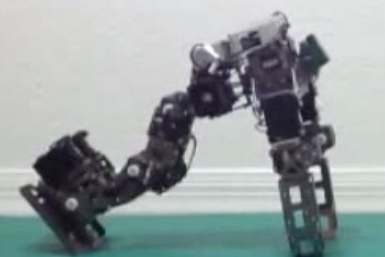Video Of The Day: Researchers Teach Robots How To Fall Gracefully
Everyone falls from time to time, even robots, and when a robot falls, it can mean serious damage to its fragile parts and electronic components.
Taking this fact into consideration, Georgia Tech researchers decided to teach robots how to fall gracefully, and with ease, minimizing serious damage. The researchers found this to be an important task given that robots are now working more closely alongside humans.
Ph.D. graduate Sehoon Ha and Professor Karen Liu developed a new algorithm that tells a robot how to react to different types of falls, like a single step to recover from a gentle nudge or a rolling motion that breaks a high-speed fall. This algorithm allows robots to minimize the damage or injury they might cause to themselves or others while falling by learning the best sequence of movements to slow their momentum. The team used a physics simulation and experimentally tested the algorithm on a BioloidGP humanoid.
“A fall can potentially cause detrimental damage to the robot and enormous cost to repair,” said Ha, who graduated in summer 2015 and is now a postdoctoral associate at Disney Research Pittsburgh in Pennsylvania. “We believe robots can learn how to fall safely. Our work unified existing research about how to teach robots to fall by giving them a tool to automatically determine the total number of contacts (how many hands shoved it, for example), the order of contacts, and the position and timing of those contacts. All of that impacts the potential of a fall and changes the robot’s response.”
“From previous work, we knew a robot had the computational know-how to achieve a softer landing, but it didn’t have the hardware to move quickly enough like a cat,” said Liu. “Our new planning algorithm takes into account the hardware constraints and the capabilities of the robot, and suggests a sequence of contacts so the robot gradually can slow itself down.”
Story and video via Georgia Tech.

